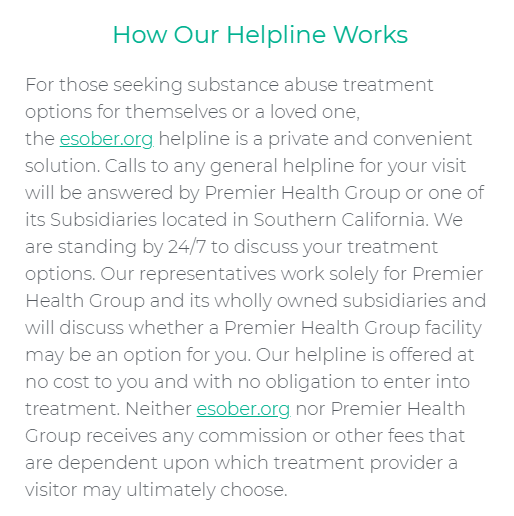There’s a common misconception that drug abuse is only limited to street drugs and prescription medication. However, this just isn’t the case as over-the-counter drugs also pose a serious threat to the health and well-being of the general populace. In fact, Americans are abusing or misusing non-steroidal anti-inflammatory drugs at an alarming rate.
Among the many over-the-counter drugs, there is one drug that poses the biggest threat when it comes to drug addiction. Dextromethorphan (DXM) is an over-the-counter cough suppressant that is found in many cough syrups and cold medicines. And while it is undoubtedly useful in treating the sick and is mostly harmless, it can also be easily abused and become addictive for the individual taking it.
If you want to know more about medication, read on as we discuss dextromethorphan’s effects, side effects, and how to approach dealing with DXM addiction.
Dextromethorphan High
For the purposes of harm reduction, it’s important to understand the dextromethorphan high before all else. Keep in mind that the drug’s effects can vary depending on the dosage. DXM’s effects can be separated into four different stages called plateaus. The more DXM a person consumes, the more severe its effects. In fact, low to moderate doses of the suppressant can cause a range of different effects. Numbness, disorientation, and dizziness are quite common, but DXM also causes a change in a person’s sensory perception, which is why hallucinations can occur at high doses.
For a more detailed breakdown of the DXM high, we’ve prepared a guide of the effects that you can expect at each plateau.
1st Plateau
At 100 to 200 mg, DXM’s effects are comparable to that of 3, 4-methylenedioxymethamphetamine (MDMA) or ecstasy. At this dosage, DXM imparts an uplifting effect on the user that gives the individual a slight bump in energy and makes them more talkative.
2nd Plateau
A person experiences the second stage at around 200 to 400 mg of DXM. At this stage, the drug’s effects can be likened to that of severe alcohol intoxication. This is most evident in the drop in motor and cognitive functions. At this dosage, it’s also not uncommon for the user to experience hallucinations.
3rd Plateau
At 400 to 600 mg, DXM takes an intense turn. At this stage, the drug’s effects are similar to those of ketamine. Its dissociative properties are also on full display at this dosage and can leave users completely incapacitated.
4th Plateau
Users hit the 4th plateau at extreme doses of DXM. This ranges from about 500 to 1,500 mg, and at the dosage, the drug’s effects can be likened to hallucinogens like phencyclidine (PCP). This plateau also has lingering effects, with some people noting that they still experienced the effects of the drug two weeks after taking it.
This stage’s effects are similar to that of the 3rd plateau, albeit much more intense. The dissociative properties of the drug can induce a sensation that’s similar to that of having an out-of-body experience. Delirium and severe hallucinations are also quite common at this stage, which causes users to exhibit extreme and erratic behavior. Lastly, the numbness associated with the drug usually takes a turn for the worst and causes users to exhibit reduced pain perception.
What Is Dextromethorphan
There are two kinds of cough medicine: antitussives and expectorants. Antitussives work by blocking the cough reflex in the user’s body. Expectorants, on the other hand, help clear your airways. DXM is an antitussive, which means it has the properties to act as a cough suppressant.
As we’ve stated above, DXM is used in many over-the-counter cough suppressants and cold medicines. Like most of the medicine designed to combat cough and colds, it comes in both capsule and syrup form. What’s interesting about the medication in question is that it was originally concocted to replace codeine in cough medicine. Codeine is an oft-abused drug that is a particularly dangerous and addictive drug; it is used to treat pain and reduce coughing.
While DXM was created to be a safer alternative to codeine, DXM itself has also become a drug of abuse. Because of this, a medicine containing DXM should be limited to around 10 to 20 mg every four to six hours. In other cases, it’s advisable to take 30 mg every six to eight hours. Ultimately, this should be the limit to using DXM safely with no risk of abuse.
While the drug is particularly harmless at low doses, users who use it for non-medical reasons often take extreme amounts of DXM to increase its dissociative and sedative effects. In fact, people who abuse the drug are known to use around 240 to 1,500 mg per dose. What’s even more alarming is that people who are addicted to the medication in question tend to go through several bottles per day to maintain their high.
Dextromethorphan Side Effects
So, what makes DXM so dangerous? Well, it has a multitude of different side effects that increase in severity depending on the degree of misuse.
When used properly, moderate side effects of the drug include drowsiness, dizziness, and nausea. Vomiting may also occur in some cases, but the real danger is introduced when users start taking more than the recommended dosage.
When used incorrectly, DXM can cause side effects that are detrimental to both the user’s physical and mental health, and these include:
- Panic attacks
- Nausea
- Dizziness
- High blood pressure
- Vomiting
- Paranoia
- Impaired cognitive functions
- Hot flashes
- Raid heart rate
- Complete dissociation
What’s even more worrisome is that these side effects can cause lingering physiological and psychological damage to the user in cases that the DXM trip gets too intense.
Dextromethorphan Abuse
What people fail to understand is that despite being an over-the-counter drug, DXM still poses a great threat and can be easily abused. In fact, frequent use of it can cause a physical dependence on the drug. This is especially true in cases wherein users have built up a significant tolerance to DXM, forcing them to take more to get the intended effects.
If you or your loved ones are suffering from DXM drug addiction, it would be best to locate and seek immediate assistance from an Addiction Treatment Center as its side effects can cause physical and mental harm to its users. This is advisable as quitting DXM cold turkey can be quite difficult due to the many withdrawal symptoms that come with it.
Symptoms of DXM Withdrawal
- Anxiety
- Insomnia
- Restlessness
- Diarrhea
- Nausea
- Weight loss
- Intense craving
While these symptoms aren’t particularly dangerous, seeking professional help goes a long way to reduce the risk of relapses. This is because relapsing can increase the chances of misuse and can lead to users overdosing on the drug.

If you’ve misused DXM, you’ll also want to be aware of the symptoms associated with DXM overdose. If you notice any of these symptoms occurring, seek professional help immediately as DXM overdose can lead to death.
Symptoms of DXM Overdose
- Irregular breathing
- Bluish fingernails or lips
- Blurred vision
- Hallucinations
- Severe drowsiness
- High or low blood pressure
- Involuntary muscle twitching
- High body temperature
- Seizures
Conclusion
We hope this article has shed some light on the negative effects of DXM. It’s important to keep all of these things in mind when using DXM, as the drug can be easily abused. Misuse of the drug can be harmful to the user’s overall wellbeing, which is why it’s important to only use DXM according to the proper guidelines and strictly adhere to the recommended dosages.
Sources:




